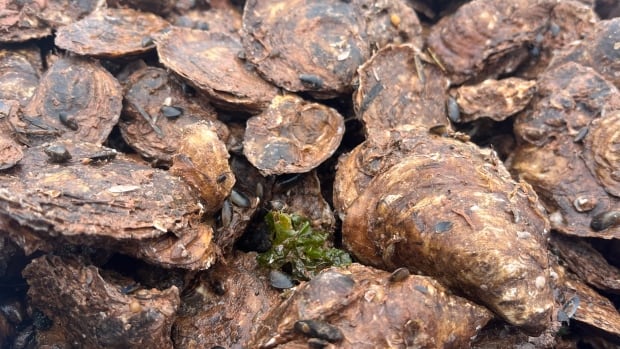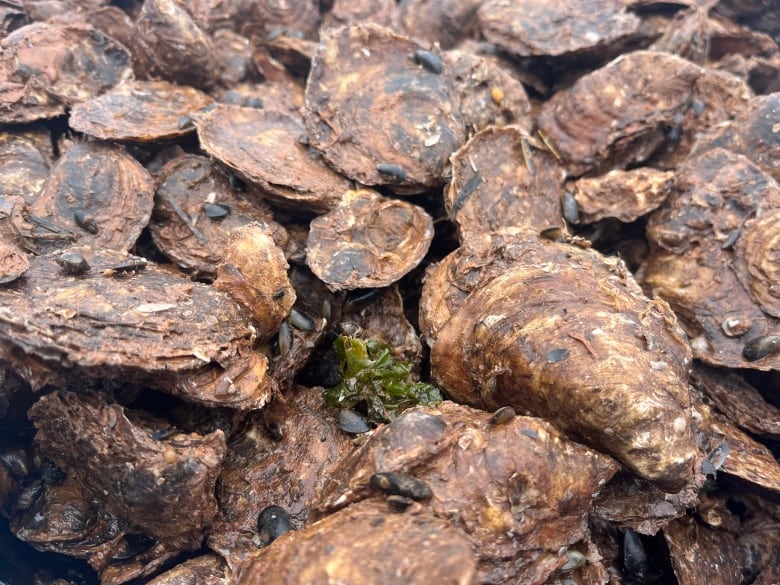
As the weather warms up and Canadians start thinking about coastal holidays, trips to the beach or even just grabbing dinner on a restaurant patio, some are concerned a bacteria called vibrio could ruin a summer favourite.
If affected by vibrio, oysters — specifically raw oysters — can cause serious gastrointestinal illness. Though vibrio isn’t a new threat, experts say climate change is causing it to spread, making it a growing concern.
Does that mean you have to give up raw oysters for good? While some on social media are sharing claims that vibrio can cause necrosis and even death, food safety experts like Dave Love say the truth is not quite so scary, but people should still be careful.
Love, a senior scientist at the Johns Hopkins Center for a Livable Future, says when it comes to eating raw seafood, there are some risks Canadians will have to weigh.
So if you’re hoping to indulge in shellfish over the coming months, here are some tips on how you can do it safely and what to watch out for.
What is vibrio?
Vibrio are naturally occurring bacteria that live in the sea. There are a variety of them, but the one most commonly referred to when talking about shellfish and food-borne illness is vibrio parahaemolyticus.
While this form of vibrio has been around forever, Love says it grows in warm water and as climate change causes water temperatures to rise, the amount of vibrio increases, too.
“It’s also increasing where vibrio lives, geographically,” he said. “So vibrio are now spreading into parts of the world that haven’t seen vibrio before.”

Oysters are part of a group of animals called filter feeders — they feed by straining plankton from water, but their filters can also trap algae and bacteria.
“They accumulate food, but also vibrio,” said Love. Though clams and mussels are also filter feeders, he says the focus is often on oysters because they are usually eaten raw.
Information Morning – NS10:27Warming oceans are pushing a oyster dwelling bacertia northward
New research shows warming ocean temperatures are driving something called “vibrio bacteria” further north, bringing with it exposure to sometimes fatal illnesses for shellfish consumers. Charles Purdy runs Bay Enterprises. Tom Smith is executive director
What is vibriosis?
Eating raw or undercooked shellfish containing vibrio can cause an infection called vibriosis according to Health Canada.
It’s most commonly a food-borne illness, but it can also be a result of exposing an open wound to water contaminated with vibrio.
According to Health Canada, you can get infected by:
- eating raw or undercooked shellfish, especially oysters.
- drinking contaminated water.
- exposing open wounds to salt water or brackish water (where fresh and salt water meet), raw seafood or seafood juices.
- fishing in marine coastal waters and estuaries.
- shucking oysters.
Symptoms often appear 24 hours after exposure and can include diarrhea, abdominal cramps, nausea, vomiting and headaches.
“Most people would think of it like food poisoning,” explained Love, nothing that while symptoms can last for up to seven days, most cases resolve on their own.

How do I avoid getting sick?
“It’s impossible to see vibrio bacteria with the naked eye,” said Love.
According to Health Canada, food containing vibriosis may even smell and taste normal, so the key to avoiding it lies in knowing where the seafood is from and how it’s prepared.
Love suggests cooking oysters in high heat, by either frying, broiling or baking them. And if you’re buying oysters, whether from a restaurant or a store, he says you should ask to see the tag on the bag.
“Every bag of oysters should have a tag that says where it was harvested and the date it was harvested,” he said. “That lets you know it was harvested in a safe way and a responsible way.”
Love notes that seafood should be refrigerated right away and kept in the fridge until ready to eat. He recommends eating raw oysters no more than seven to 10 days from the date they were harvested.
Is eating raw oysters safe?
Eating raw oysters is much riskier than eating cooked oysters, according to Love, but that’s true of any meat.
Despite the potential for illness, Love says the risks are still relatively small.
“At its riskiest in the summer, vibrio illness rates are one in 10,000 raw oysters eaten.”
However, Health Canada recommends people more at risk for complications should avoid raw or undercooked shellfish altogether. That includes pregnant women, the elderly, children and people with weakened immune systems, liver disease or low stomach acidity.